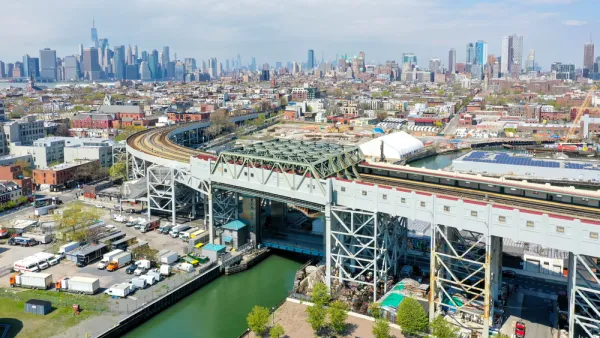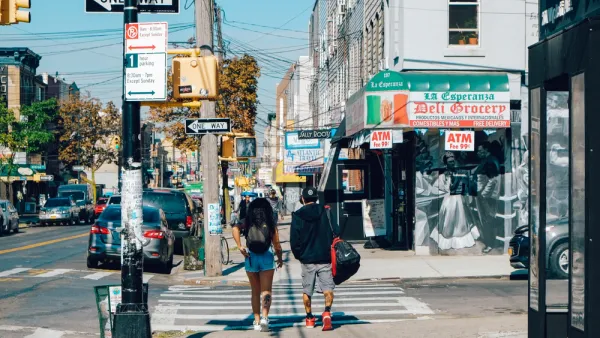Will Doig discusses the increasing speed at which urban bohemias are colonized, popularized, and gentrified. Does the rapid transformation of urban subculture into mainstream culture, mark the end of urban bohemia?
Boy, this whole urban inversion thing is really taking off. No sooner have we diagnosed a widespread return to the city, and already we're running out of old warehouse districts and urban waterfronts for starving artists to colonize.
Or at least, such is the situation described by Robert Anasi, in his new book "The Last Bohemia: Scenes From the Life of Williamsburg," and in a recent Salon article by Will Doig.
Take Bushwick, Brooklyn for example. No sooner was it identified as a bohemian alternative to neighboring Williamsburg, than the gentrifiers moved in. "'The change is indeed dramatic,' wrote Crain's New York of Bushwick last year. 'In the last year alone, three cafes, two bars, one art gallery, one organic grocer and several other retail businesses have opened.' By 2011, rents were up 63 percent over four years earlier."
According to Christopher Mele, author of "Selling the Lower East Side," "Bohemian neighborhoods were once considered stubborn and resistant to gentrification, but that's long gone. Just as we are likely to have quick and easy access to niche or specialized markets for music, art, design and other cultural products, we have access to urban neighborhoods with distinct place identities."
With cities overrun with voracious developers and children from upper-middle-class families, is suburbia the alternative? Such is the case made by Malu Byrne (daughter of David), who wrote in a New York Times Op-Ed published in May that, "she 'might need to be out of the city in order to sustain my creative spirit.' 'The notion of ‘making it in the city' is increasingly nostalgic and impossible,' she writes. 'Yes, the city supports the arts, but not its up-and-coming artists.'
Thanks to Emily Williams
FULL STORY: Can bohemia be saved?

Analysis: Cybertruck Fatality Rate Far Exceeds That of Ford Pinto
The Tesla Cybertruck was recalled seven times last year.

National Parks Layoffs Will Cause Communities to Lose Billions
Thousands of essential park workers were laid off this week, just before the busy spring break season.

Retro-silient?: America’s First “Eco-burb,” The Woodlands Turns 50
A master-planned community north of Houston offers lessons on green infrastructure and resilient design, but falls short of its founder’s lofty affordability and walkability goals.

Test News Post 1
This is a summary

Analysis: Cybertruck Fatality Rate Far Exceeds That of Ford Pinto
The Tesla Cybertruck was recalled seven times last year.

Test News Headline 46
Test for the image on the front page.
Urban Design for Planners 1: Software Tools
This six-course series explores essential urban design concepts using open source software and equips planners with the tools they need to participate fully in the urban design process.
Planning for Universal Design
Learn the tools for implementing Universal Design in planning regulations.
EMC Planning Group, Inc.
Planetizen
Planetizen
Mpact (formerly Rail~Volution)
Great Falls Development Authority, Inc.
HUDs Office of Policy Development and Research
NYU Wagner Graduate School of Public Service




























